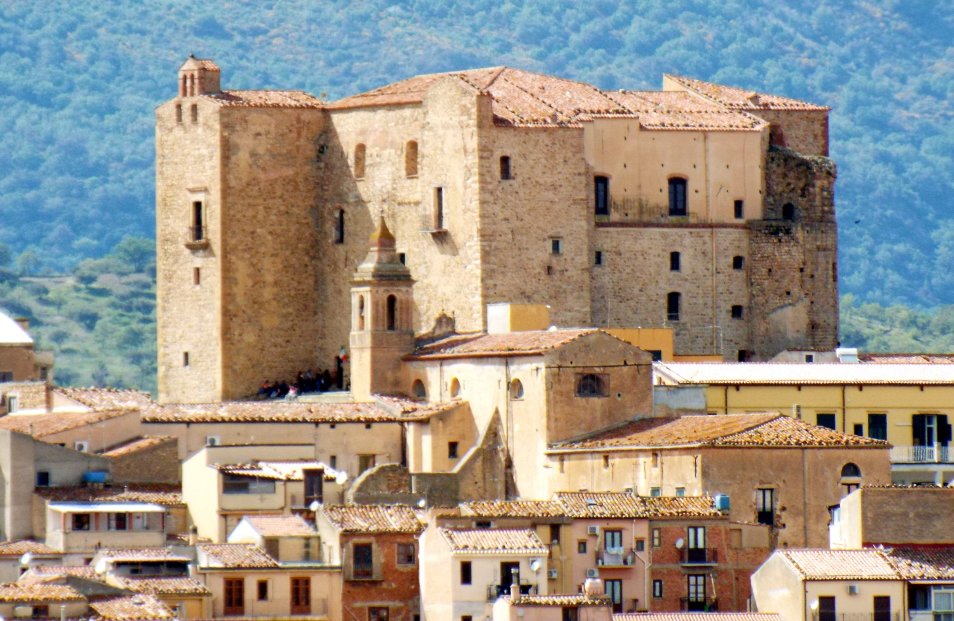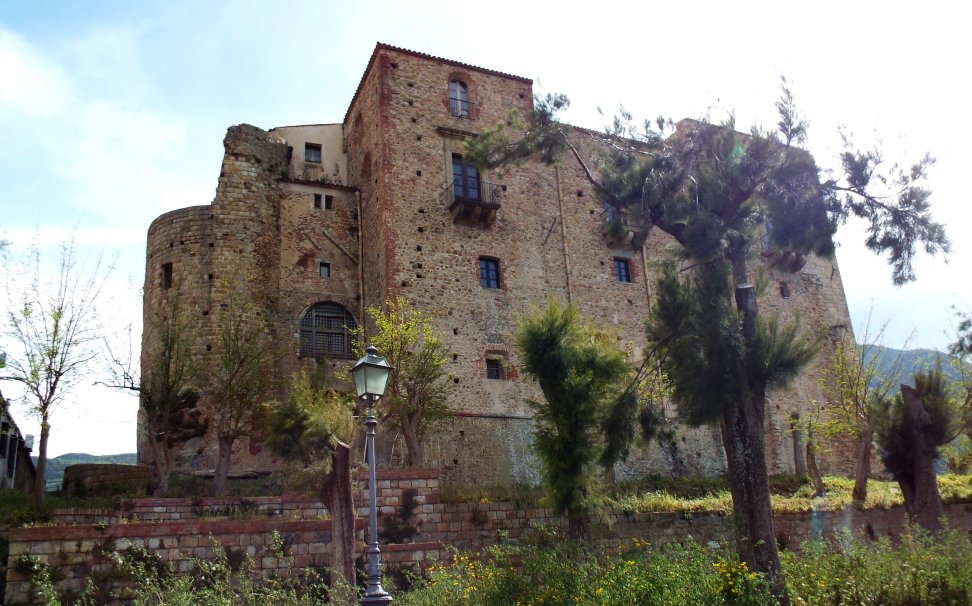Castelbuono

With the Sicilian Vespers of 30 March 1282, Count Francesco
Ventimiglias of Geraci welcomed the Argonese and later made an alliance with his
family enemies, the Chiaramonte family. He did this by
marrying Costanza, sister of the Count John Chiaramonte of Modica in
1315. The next year, 1316, he began building his own fortified palace on King Charles' castle. An epigraph of
1322 mentions the castle. Later, as they had no heir,
Francesco repudiated his wife, gaining the hatred of the powerful
Chiaramontes. On the death of King Frederick III of Aragon in
1337, the Chiaramonte family returned to favour and Count Francesco was
arrested, sentenced to death and his county confiscated. The
family, however, survived and later acquired control of the castles of Roccella and Sperlinga.
Between 1454 and 1456 Giovanni Ventimiglia expanded Castelbuono castle and
restored the palace chapel to house the skull of St Anna, which was
taken from the chapel of Geraci Siculo castle. In 1683, the
chapel was moved to the second floor of the southern wing and
decorated with stuccos, making this the baroque pride
of the castle.
Description
Castelbuono castle stands on the summit of the 1,388' hill of San
Pietro. It is four square with a 3 storey rectangular tower at each
corner, except for the northeast one. Here stands a D shaped tower. The regularity of this plan has been
deformed by extensions to the north and west which have reduced the
projection of the towers on some fronts. Inside the building
is a small, open central courtyard. What presently is called the
castle was, in reality, the palace placed inside a
defensive walled perimeter of which there are now only some
traces. Two ramps lead up to the two different
entrances. The ramp wrapping the south and west sides is the
oldest. The other is in line with the eighteenth century
gate. The rectangular part of the castle is the fourteenth
century structure, while the round tower dates back to the earlier
Angevin fortress of King Charles. As such it mirrors other thirteenth century round towers like those found at Milazzo.

Why not join me here and at other Sicilian
castles? Information on this and other tours can be found at Scholarly
Sojourns.
Copyright©2019
Paul Martin Remfry


